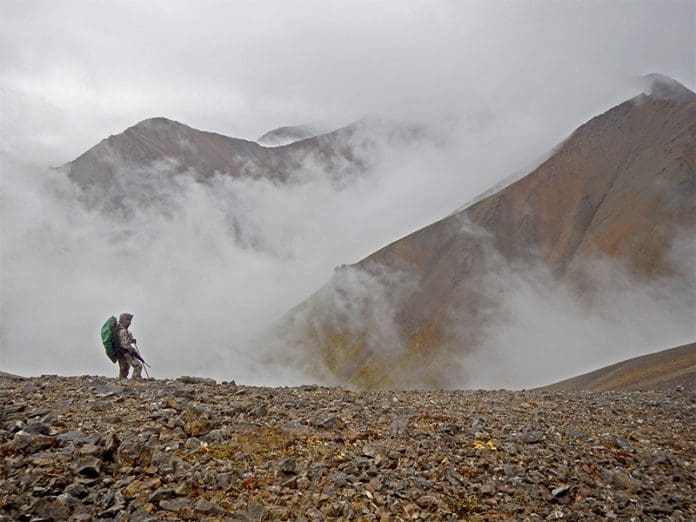LET IT RAIN! LIGHTWEIGHT RAIN JACKET SHOOTOUT
by Matt Wymer, Rokslide prostaff
This all began with a simple question, “Is it worth paying $300+ for rain gear?” and it evolved into a massive project. The end result – 6 rain jackets from top manufacturers evaluated and tested! We’re about to share the results with you, but first I’ll describe the process and methods to my madness.
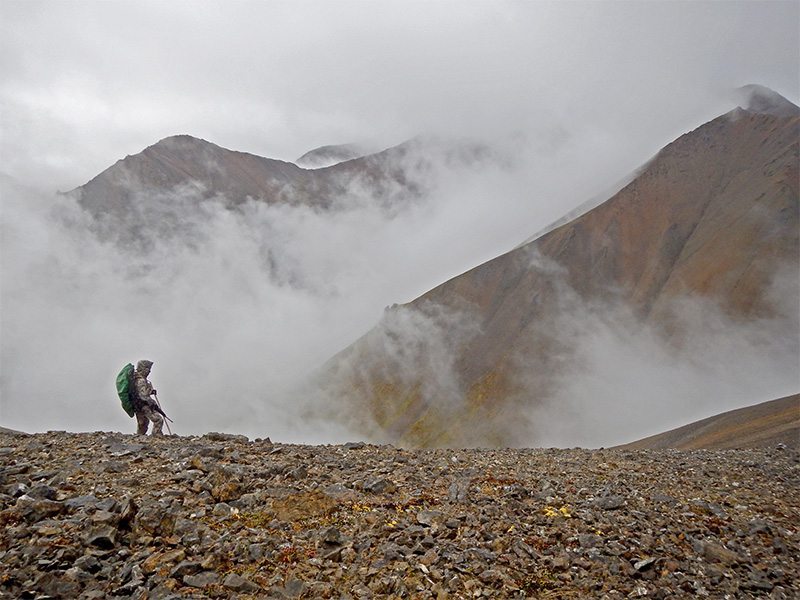
I needed help in this venture so I recruited two reliable accomplices. My wife, an active runner, and my hunting buddy. Both agreed to chip in and provide honest feedback for the evaluations. What is missing from this is a season-long field test for each jacket. Given the timing of this review and the number of jackets evaluated, it wasn’t practical to evaluate each jacket under similar field conditions. In my mind a true field test is a 5-10 day trip in mixed conditions, repeated and repeated – something that truly pushes the boundaries of the gear. So in reality this is a rain jacket comparison with a mixture of testing, impressions, and subjective opinions about the performance based on my experience with LOTS of rain gear over the years sprinkled in. We also solicited some feedback from other Roksliders and we got some nice input from Isaac Rowland – aka “Yellowknife” and Lance Raymore – aka “Ray”.
In a conversation with Kenton, founder of First Lite, he challenged me to ensure that I gave the jackets a fair chance by utilizing a consistent layering system underneath the jackets. This is the basis for First Lite’s entire line and reinforces my experience that a proper layering system is key to comfort in the field. Therefore, base layers from First Lite & KUIU were used for all testing, and when needed, insulating layers of Primaloft and the Sitka Traverse, ¾-zip were used.
During the testing we ran, hiked, biked, and walked in the rain. Jackets were worn around town on errands, on late season hunts, on trips to the range, and more. Shooting sessions at the archery and rifle range helped test the mobility and comfort of the jackets and a backyard rain/shower test challenged the water resistance claims.
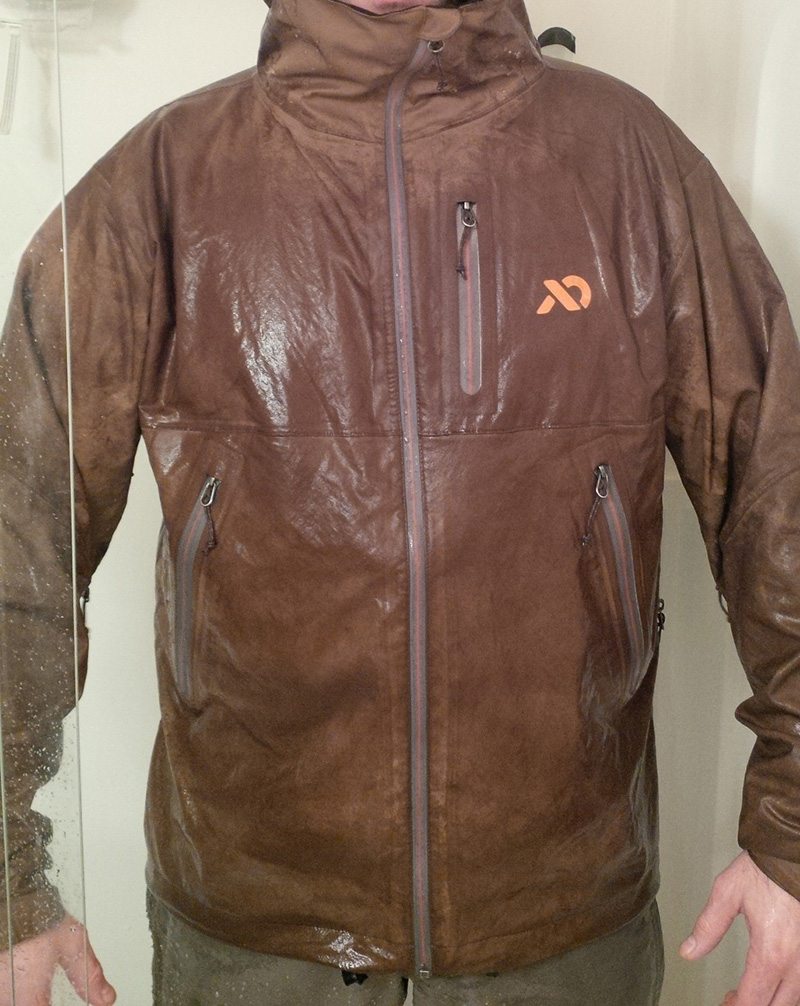
Breathability is difficult to measure objectively across a wide variety of jackets without controlled test conditions. To make the test realistic and consistent I combined real world activity with a controlled environment by using a spin bike in the relative comfort of my home. In this way I could control the temperature, effort, and duration to ensure a consistent measure for each jacket. This test was performed with each jacket zipped to just below the chin and with the pit zips closed.
Finally, the results were tallied and weighted based on the importance of each of the test criteria to measure the overall performance (score) of each jacket. Jackets were scored on a one to ten scale for each category. The benefit of this weighted scale is that you can adjust the scoring to fit your specific performance priorities. If weight is your number one concern then bump up the percentage multiplier for weight and reduce the percentage in another category that is less critical to your usage. Therefore, you will have a rating that is custom fit to what you are looking for in a jacket.
Scoring Categories Explained:
Water Resistance: This is simply a measure of how dry the jackets kept us under varying conditions? Did they pass the “shower / hose” test?
Breathability: The ability of the fabric to breathe and ventilate is critical to keeping the hunter dry under hard exertion in wet conditions. This is not a scientific test, but rather a perceived breathability as compiled from the three of us who tested each jacket. This is somewhat user subjective and is the compilation of the reviewer’s experiences and perceptions.
Weight & Packed Size: The jacket size (medium or large) used in the test are listed, and the weight of each jacket was measured on a digital scale. Packed size is a measure of how much space a given jacket occupies in your pack. Other than the Versalite most of the jackets packed up to fairly comparable size.
Comfort & Mobility: We evaluated the fit of the jack and whether it allows sufficient freedom of movement for typical hunting and outdoor activities. Some jackets fit better than others and the little things can really make a difference. Features like fleece in the chin area where the zipper comes up, proper fit and protection offered by the hood, a waist that doesn’t ride up when the arms are raised, and effective wrists closures were all factors in this category.
Noise Factor: Noise was evaluated under two conditions: 1. Noise caused by movement while wearing the jacket, and 2. Noise caused when the jacket came in contact with something else (like brush). It is worth mentioning that some of the materials may break-in and get quieter over time, especially after washing, according to the manufacturers.
Perceived Durability / Quality of construction: Since this was a short term test, we had to base this evaluation on our perception of the build quality of each jacket. We had to consider the apparent quality of seams, zippers, and pulls. We considered the weight of the fabrics and the abrasion and tear resistance. We also took special note of any wear that resulted from our short-term test.
Scoring Breakout Used:
20% Water Resistance
20% Breathability
20% Weight & Packed Size
15% Comfort & Mobility
15% Perceived Durability & Quality
10% Noise Factor
A Little Background:
While this comparison primarily focused on the 6 jackets listed I will also provide some comparative info on several other jackets I have personally used and tested. These include the Patagonia Rainshadow, Cloudveil Zorro, Kryptek Koldo, and the original KUIU Chugach. My experience with these products served as a basis for comparison to the six jackets that are the focus of this review. Yes, I have owned more rain jackets than anyone should, but I hunt in Alaska and I hate being wet! Hopefully you’ll buy the perfect jacket the first time with the information in this review.
If you recall my original question was, “Is it worth paying the price for high end rain gear?” The answer, of course, really depends on your needs. However, for the serious back-country hunter, the dollars are well spent. The following paragraphs are a summary of our impressions of each jacket, in alphabetical order by company.
First Lite – Boundary Stormtight
The thing that draws me to the First Lite Boundary Stormlight jacket is the Dry Earth color. It’s a sharp and versatile color that works great in the mountains or on the way to the office. However, if you prefer camo, it’s also offered in three popular patterns. In our tests this jacket kept us dry and exhibited excellent breathability. After a particularly difficult hike, I checked the liner of the jacket, and was surprised to see that it remained dry. My base layer was slightly damp, but the liner of jacket was not holding any moisture. The jacket fits looser than the others, primarily in the chest which makes it ideal for heavier layering or for the hunter who runs a chest holster or larger bino pack/pouch. Everything from the zippers to the wrist closures exude quality and overall the jacket is well tailored. It features a two way adjustable hood, two front pockets and one chest pocket. Pit zips were the longest of those tested and readily allowed free-flowing ventilation when opened.
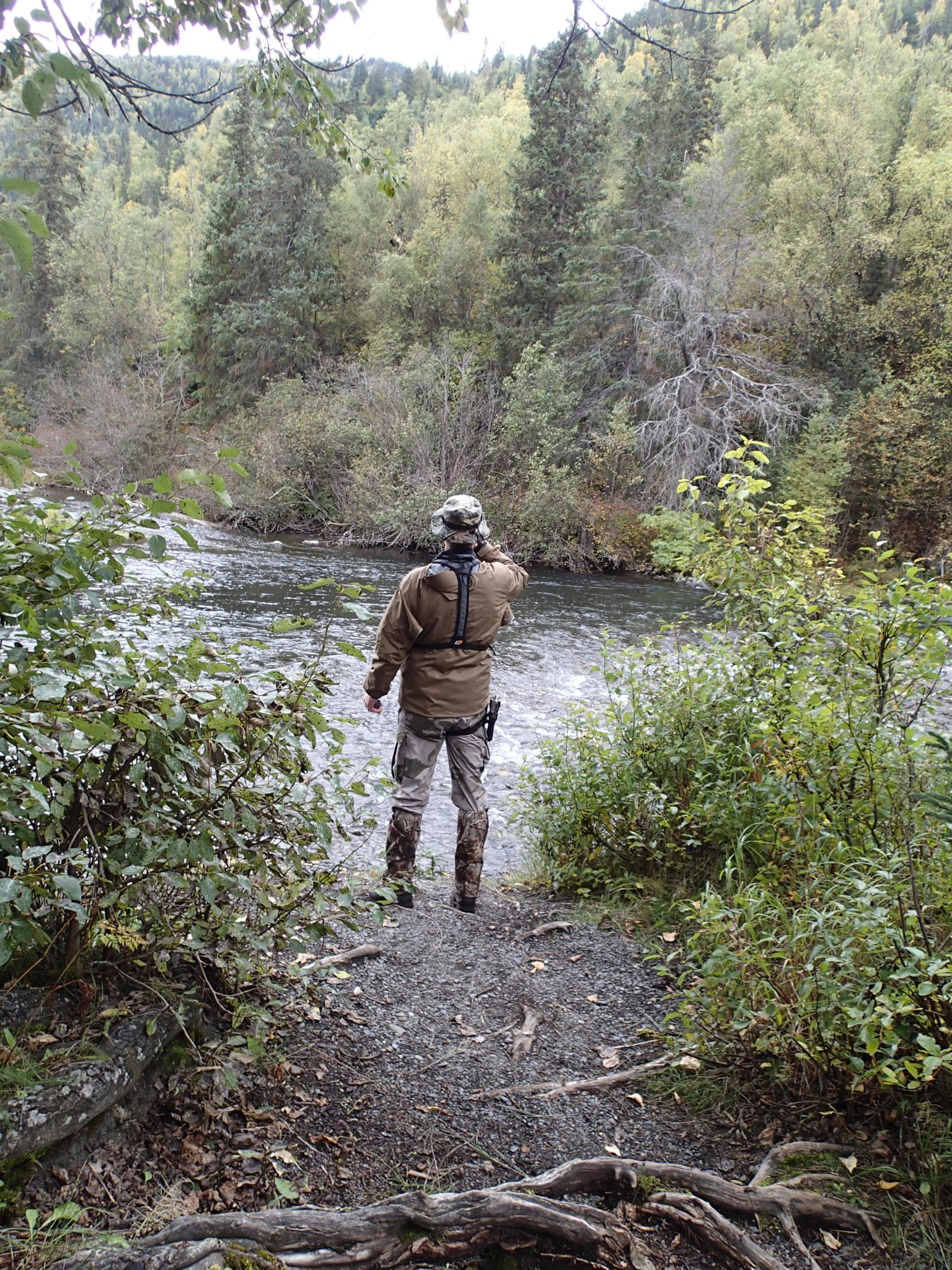
The Boundary Stormtight fabric has a notably softer feel than the other jackets and this helped First Lite earn the quietest jacket rating. Keep in mind, no rain gear is super stealthy, but the Stormtight leads the pack in this category.
The 2.5 layer stretch fabric makes for a comfortable, well-fitting jacket that should hold up to long term field use. First Lite’s entrance to the rain gear market is a solid piece of gear and offers unique features that separate it from its competitors (camo pattern, solid color, looser fit, large vent zips, and quieter fabric).
Kryptek Poseidon
The Kryptek Poseidon jacket is light, fairly robust, and priced at a level that makes it a solid value. What makes this jacket unique is that it is a pull over jacket without pit zips. As such the designed intent of this jacket may be slightly different than how I used and tested it. It features a compression wrist enclosure that is embedded within the sleeve of the jacket. This seems to help reduce wind and moisture from creeping up the sleeve, but my wrists would get sweaty under high exertion while wearing this jacket.
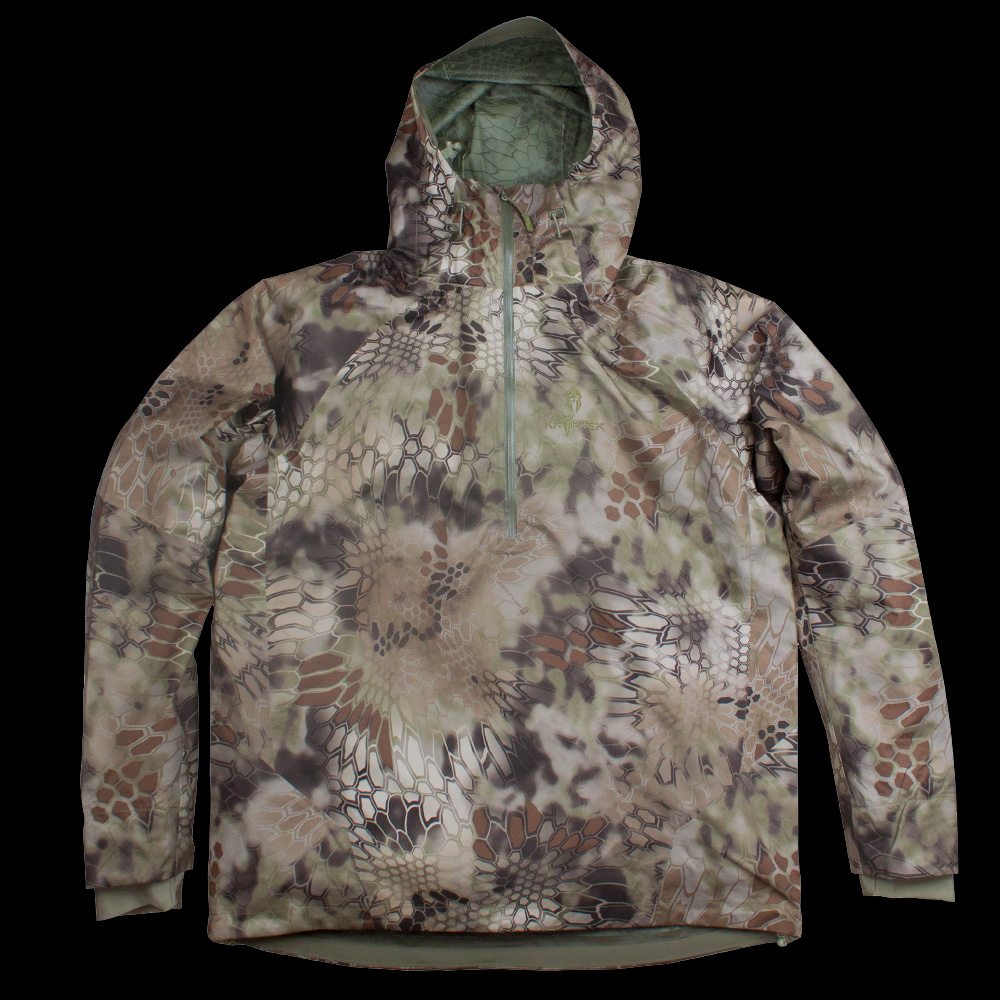
The jacket is well constructed with quality zippers and finish. The hood is roomy, but the lack of a rear cinch made it hard to keep on when facing into a stiff headwind. You can cinch it at the front, but it’s not as easy to secure as other jackets. When speaking with the folks at Kryptek they suggested I go with a size large vs. my normal size medium. They were spot on. A medium would have fit, but the large was comfortable and fit just as it should.
The Poseidon lags behind the Chugach NX, Dewpoint, and Stormtight both in terms of water resistance and breathability. I think with some minor tweaks and a fabric upgrade the Poseidon will evolve into a great jacket. I also had the opportunity to use the Poseidon pants. They fit well, and leg zips allow for great ventilation when you’re on the move. However, they were not as waterproof as other pants I have tested.
KUIU Chugach NX
I have been using the original Chugach jacket for the last 3 seasons and it has proven itself to be breathable and highly water resistant. The newer Chugach NX follows in this tradition and incorporates new fabric that doubles the breathability specification and is quieter than the original.
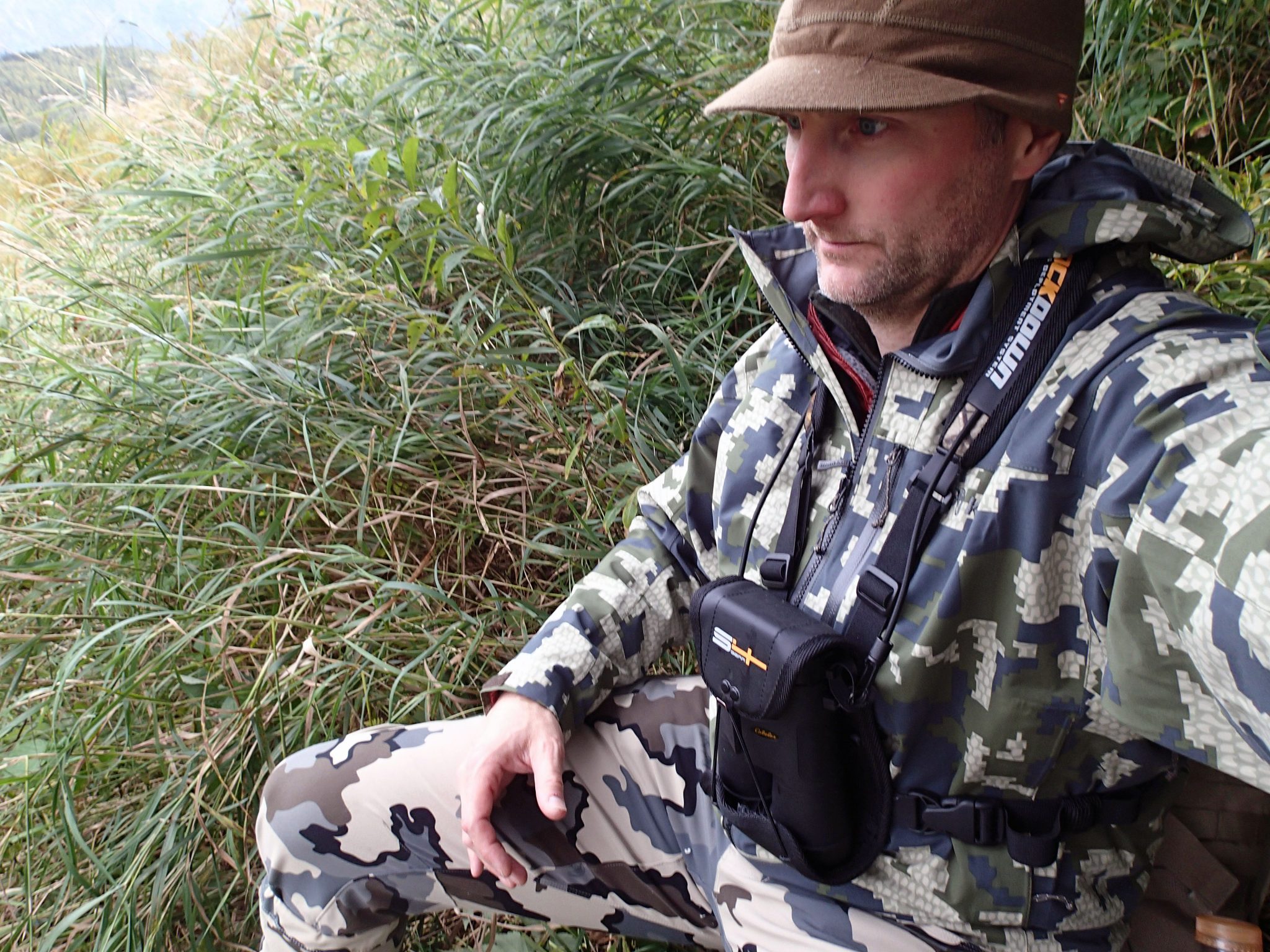
This high quality jacket will go the distance. Despite a more tailored, athletic-type fit, the jacket is extremely comfortable and allows full freedom of motion thanks to 360 degree flex fabric. The hood is well fitted and easily secures around the head via a rear adjustment and a standout feature that cinches the hood securely around the face. This is my favorite hood of the test. The draw cords are on the outside of the jacket, but can be stuffed back into the cord outlet area and out of the way if desired. The wrist closures allow for wide range of “tightness” and the zippers feel solid and are good quality. The internal liner is soft and comfortable, almost giving the jacket a bit of insulating warmth. This jacket and the Dewpoint are the two most breathable jackets in the bunch.
KUIU continues to push the boundary with new fabrics technologies from Toray and packages them in a full featured jacket that makes a great companion for serious mountain hunts. In a perfect world, I would like to see it be cut slightly longer and come in a little lighter on the scale.
Marmot Precip
I originally started this effort because I was curious if a $99 jacket from a reputable outdoor company could compare to the $300+ hunting specific jackets. The difference is easy to spot when you have all the jackets in hand. The material of the Marmot is a more rigid material without the flex of the multi layered competitors. It’s not as comfortable or breathable as the higher priced jackets, and it’s a bit louder. It does keep you relatively dry, but you will be damp in sustained wet weather especailly if you’re in contact with wet vegetation. It breathes fairly well compared to its expensive competitors, especially when using the pit zips.
The Precip has a double flap feature where the jacket Velcro’s over the zipper which really helps keep wind and moisture out of the zipper. The hood is adjustable but the Velcro adjustment in the rear does not provide the same security as the adjustments from some of the other jackets. Like all of the jackets the wrists were easily adjustable. The Precip comes in large variety of colors, some of which are hunting friendly.
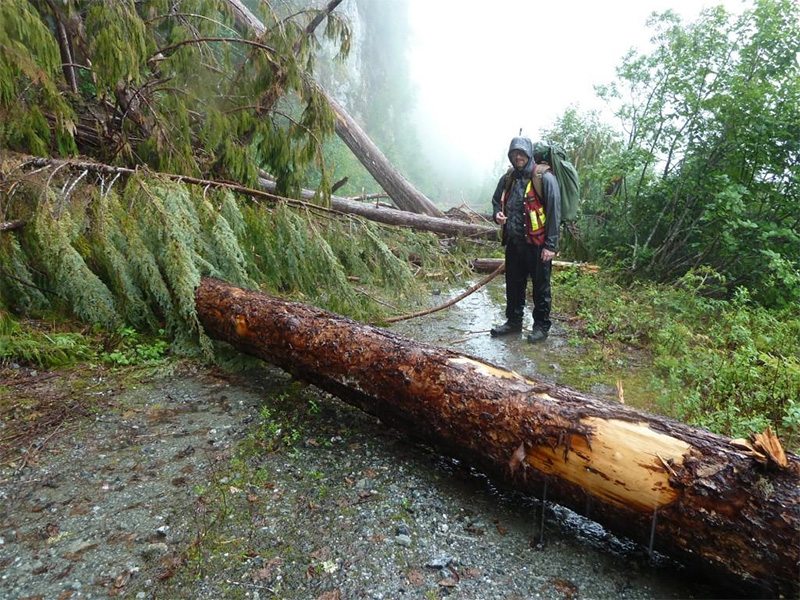
At $99 the Precip is a decent jacket for the money, but you are sacrificing some performance and features compared to the competition. This is a good value for the hunter on a tight budget. It does not have the stretch of the other jackets so it would be wise to size up to allow for ease of movement. I’m not sure the jacket would hold up as long as the more expensive fabrics, but at $99 a hunter could afford to replace it every few years as needed.
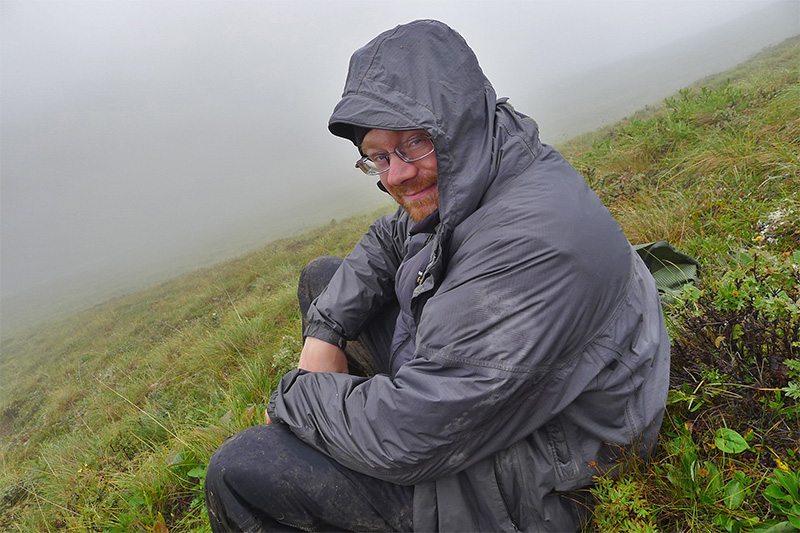
Mont-Bell Versalite
I was hoping for much more from this jacket. It is the lightest jacket in the test, but I would not recommend this jacket for the average hunter. It’s made out of a super lightweight material that is almost translucent. The nice grey color on the internet was much darker in person, closer to black. Combine that with the poor breathability and reflective striping and this jacket gets relegated to the ultra-light crowd where the jacket is more of an “if needed” vs. “essential” tool. I seriously doubt the long term durability of the jacket for hunting use. With all the negatives this jacket is still well designed and thoughtfully done. In my mind this would be a good jacket for a cyclist or trail-runner who packs a jacket just in case. It’s light, reflective, a decent wind-breaker, and the huge pit zips do allow for additional ventilation. It is an amazingly light jacket and I hope that the form factor will find its way into a more hunt-ready package.
Sitka Dewpoint
The Sitka Dewpoint is impressive because it packs a ton of performance into a very lightweight jacket. It was on par with the Chugach NX in both the waterproof and breathability categories, but it does so in a 5-1/2 ounce lighter package. The unique pit zips open to reveal mesh backing that forms the main pockets whereas other pit zips are just wide open with separate pockets. This combo pocket/pit-zip is unique and seamless. Both the pockets and pit zips are easy to access. However, I found this weight saving feature slightly annoying. It forces you to expose the inside of the jacket to the elements by opening the pit zips in order to reach your pockets. If you are one who stores items in your pockets you will need to be sure to unzip from the top down in order not to have items come out of the pockets.
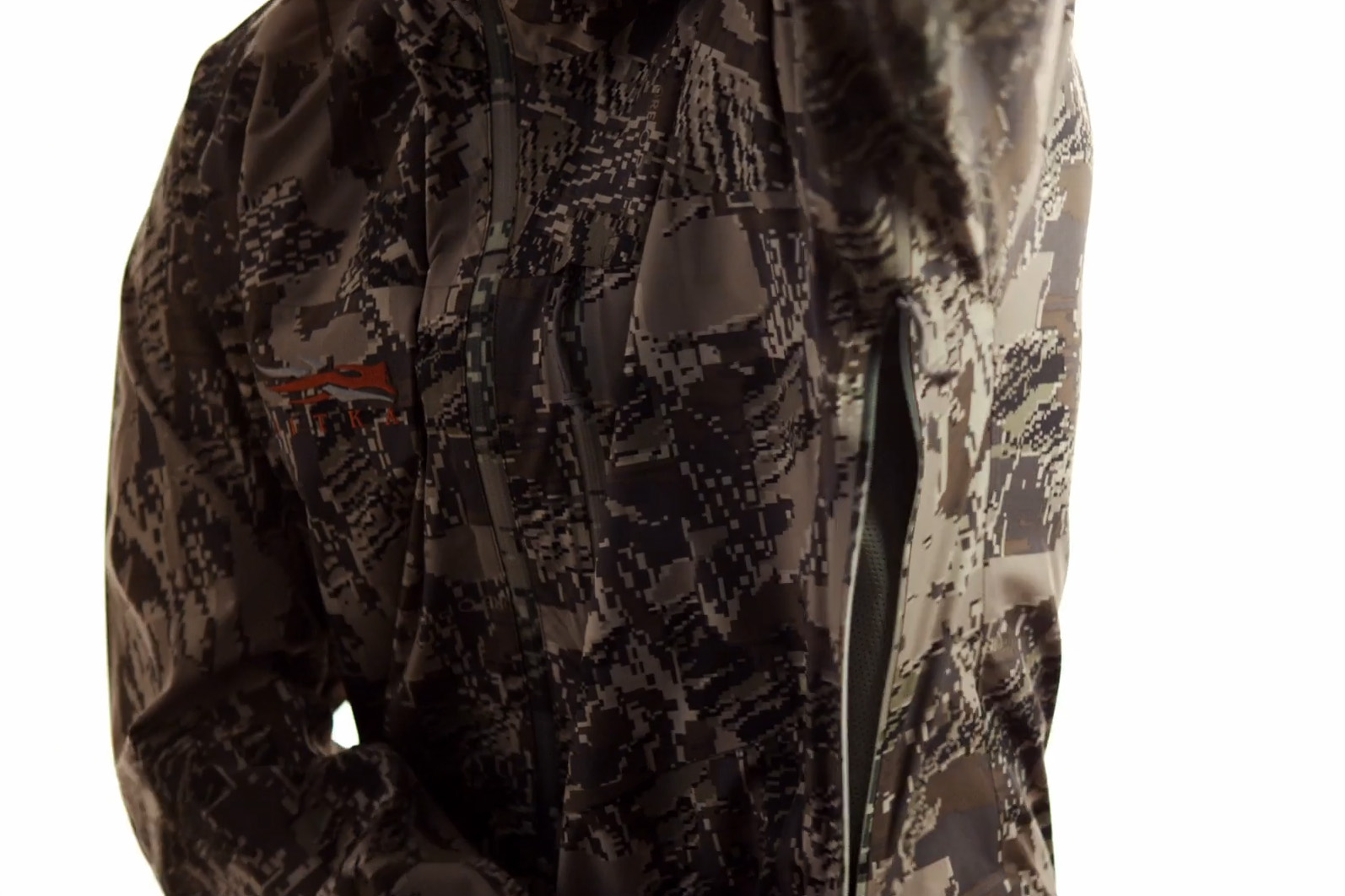
The hood is 2 way adjustable and secures around the head very well. The fit allows for full freedom of movement. It is the shortest jacket in the test and most users would benefit from an extra 2″ in length. This jacket fit my wife the best and is a good jacket for women in need of high-end rain gear. A longer jacket would add weight, but I think it would be a good trade-off.
Sitka put a lot of Gore-Tex ingenuity into this jacket and it shows in the rain-tight performance and breathability. If you complete the set with the Dewpoint pants you can shave noticeable weight from your pack. It’s the ideal combo for the lightweight junkie willing to spend the money. On a side note, I did have some issues with the Dewpoint pants leaking through the fly zipper during the rain shower test. I mentioned this to Sitka and they identified the problem and corrected it. A new prototype was sent to me. I tested the revised product and the problem was indeed corrected. I was impressed that a large company like Sitka would move that fast to correct a problem.
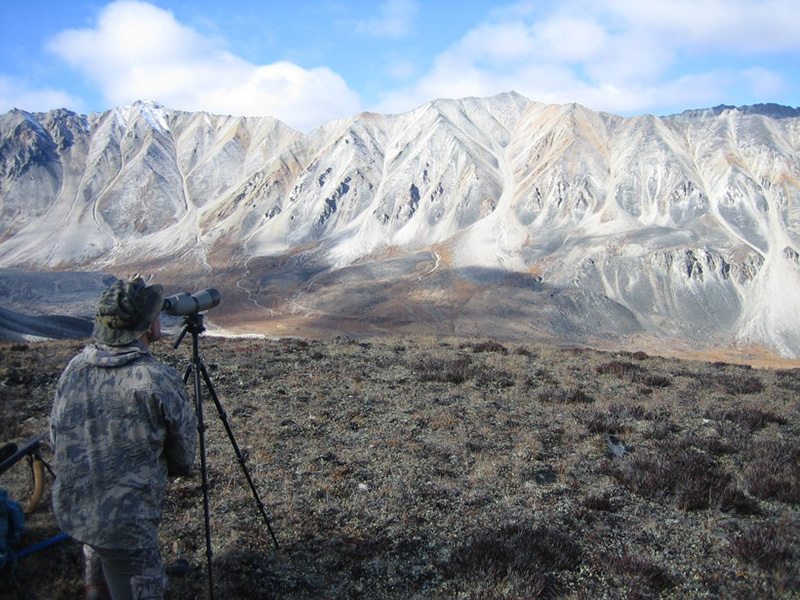
It’s interesting to note that the most expensive jacket scored the highest in this shoot-out. The key driver for this was the emphasis I placed on weight. Weight aside, the top 3 jackets are pretty darn close, but throw weight in as a key deciding factor and the statistical win goes to the Dewpoint.
Note: Due to the amount of info in the following table, it may be easier to read if you use the Zoom function in your browser typically found in the [View] pull down menu or it may show up as a magnifying glass icon at the bottom right corner.
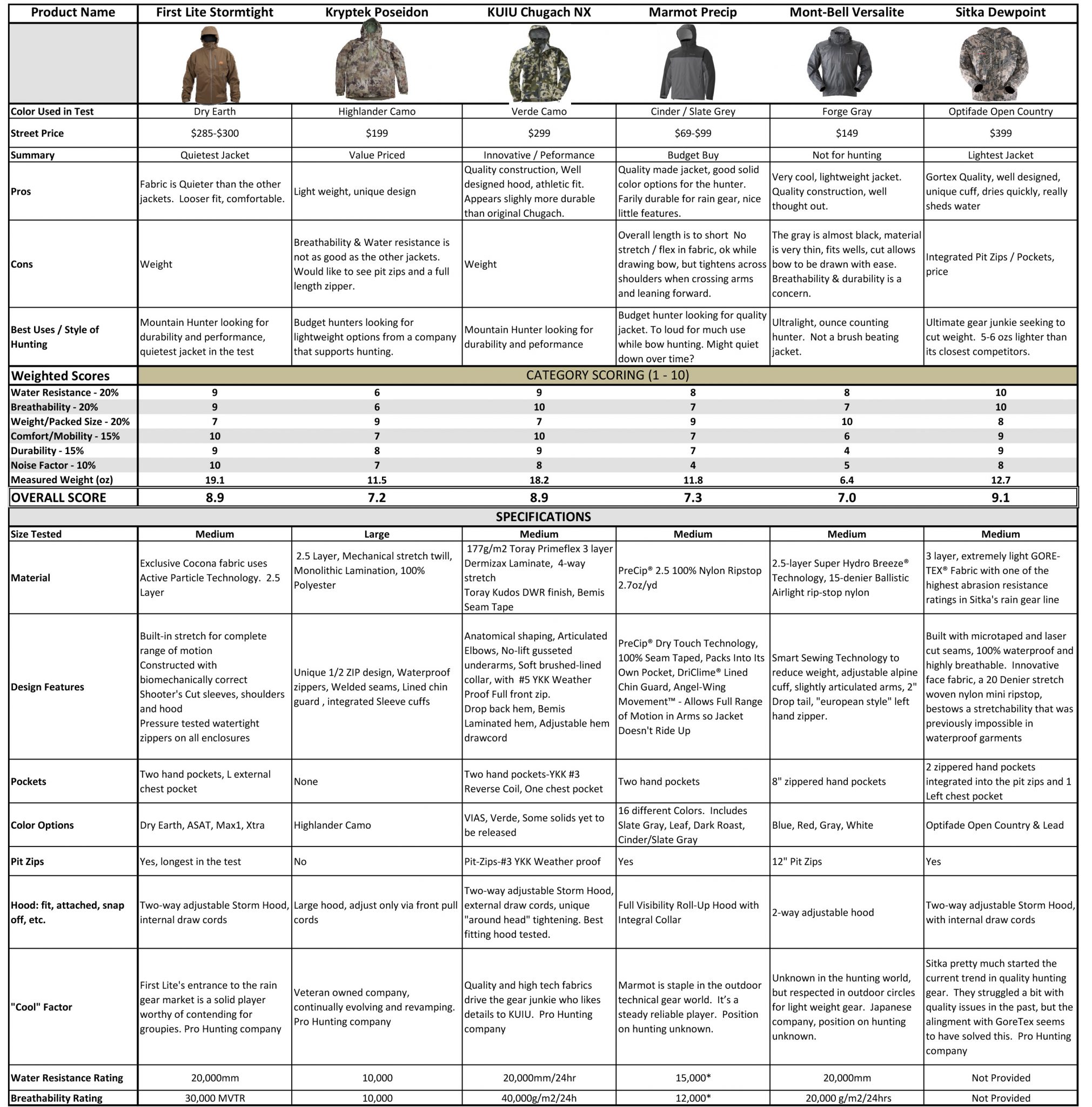
Others
Before I upgraded to the KUIU Chugach jacket I ran two other jackets on multiple trips over 2-3 years. These were the Patagonia Rain Shadow (from the MARS line) and the Cloudveil Zorro jacket. Both jackets are no longer made, but are very similar to the Marmot Precip. Of the three I prefer the Patagonia, not sure why, but it’s just been a durable well-fitting jacket for me. My biggest complaint with jackets in this class is that once they get wet they are hard to dry out. The newer fabrics seem to dry out faster – perhaps this is due to the increased breathability.
My rain pants for the last 3 years have been a discontinued pair of Patagonia Spraymaster Special that are part of the MARS line. They are a rugged waterproof pant that has handled some serious abuse. At just under 18ozs these are great pants. I have yet to test, or find a pant, that will force me to retire these. My favourite feature is the FULL length zips. To be precise these zips run all the way though the waist so that pants come apart with the only the crotch holding them together. Getting in and out of these pants is as simple as it gets and the Velcro closures on the top allow for a wide range of adjustment.
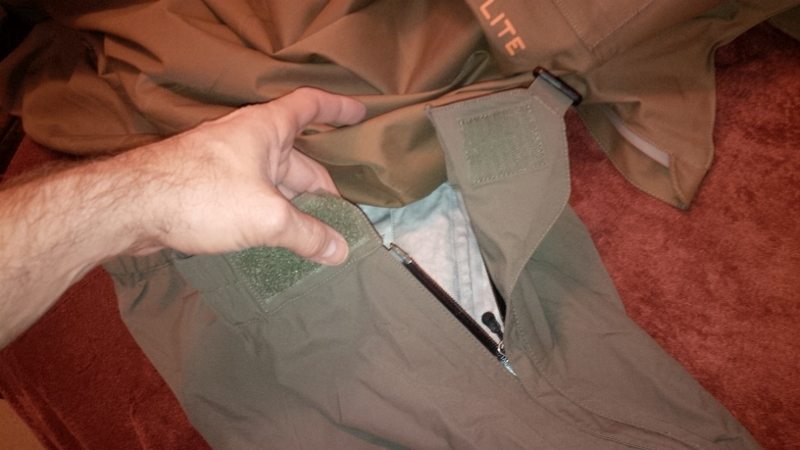
Hardcore Raingear
When the folks at Kryptek heard about this review they sent every piece of rain gear they made my way. While the Kryptek Koldo would not be my choice for an August sheep hunt, it will get thoroughly tested at moose camp and ATVing. Battlefield ready is Kyrptek’s claim and so far this set lives up to it, easily handling foul weather and they’re burly tough. I’ll provide more info on the Koldo line at a future date, but first impressions are good. Another bonus is that the Koldo is $200 cheaper than the KUIU Yukon which is KUIU’s answer for extremely wet weather. Only drawback to the Koldo is breathability. The Sitka Stormfront series also deserves mention in this category as their flagship extreme rain jacket. It’s significantly more expensive than both the KUIU Yukon and the Kryptek Koldo. It would be interesting to test these three lines and compare performance in sustained wet conditions.
Parting Thoughts
Throughout this test I was able to have some great conversations with the folks at First Lite, KUIU, Sitka and Kryptek. While each jacket and rain line has its pros and cons one theme was common. These companies are passionate about their gear and in the pursuit of excellence. The amount of effort and technology needed to build quality rain gear continues to astound me. However, the passion these companies bring to the table bodes well for the hard core hunter.














